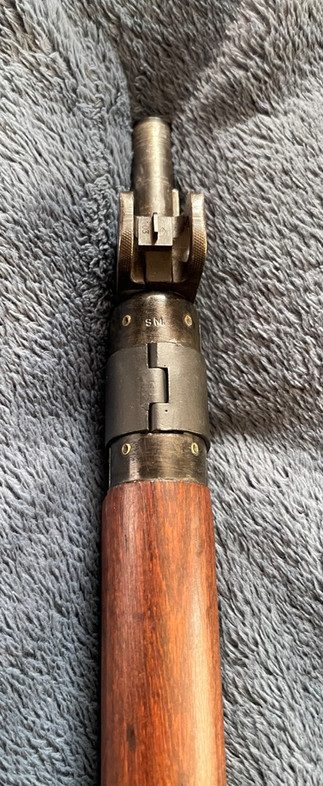1941 Maltby No4T Sniper Rifle
- artiozen
- May 4, 2022
- 2 min read
Updated: Jun 23, 2023
This rifle is part of the ArtioZen collection.

The new No4 Mk1 rifle was barely in production for a couple of months after trials ended in 1941. Maltby was one of the first factories to start producing the new rifles and were set up on a dispersed contract system - where other some components would come in from other makers (Singer Machine etc.) then be inspected - having the characteristic round inspection stamps applied and then assembled at Maltby who had made the major receiver and barrel components. The wood was also mid-war "economy" - coming from a mix of HMCo and Sykes Ltd in the allowed deviation of Beech (as Walnut was now in short supply in the Great Britain). This rifle represents the first production year of this Maltby dispersion process and the first Holland & Holland conversion contract to a "No4T" standard - the marks and details of which are a rare and unique combination (about 1 in 2000 T's are Maltby sourced from this first year window - about 150 total suspected extant).
The rifle was made in late 1941 being selected for the T program it was converted by Hollands in 1942 to an early standard - this is before they marked the S51 on the butt heel (mid 1943 onward), before the triangular sling swivel fitment (late 1944 onward - plus armourer updates when found) and before the order to stake the scope pad screws in place - (issued to armourers to update in mid 1946). The rear sight on this example is marked for "S.M. 41" - Singer Machine - this was part of the dispersion process - Singer having developed the milled micrometer rear sight for the program. This was probably fitted to the rifle at Maltby, and then Hollands ground the battle peep sight off and re-blacked. The right front receiver lug is not stamped with an "S" - which also supports Maltby fitting the rear sight (calibrating the front sight to zero on an Enfield rest) and that Hollands did not indicate a change in rear sight and the recalibration process was required when received at Enfield for onwards movement to the stores and war.
Of interest is the "low side" beech wood set - the original No4 design featured a single round cut-off. This was deleted during trials but some of the tooling was already made for the receiver and wood - so these early models feature the deleted provision for it. Within the window of the low sided wood can be seen a yellowed "green" paint - this is very early jungle service preparation - all metal was to be painted "jungle green" for corrosion resistance in the tropics - some remains in the hidden details of this rifle. Later rifles returned to "high sided" Walnut furniture. Similarly the round cocking piece is an early Trials feature, this was later simplified to the grooved slab sided cocking piece design. Also the hinged front band is a trials design / early format. The front top wood featuring a relief window in the metal cap and an indent in the wood to allow the hinge to sit flush

































Comments